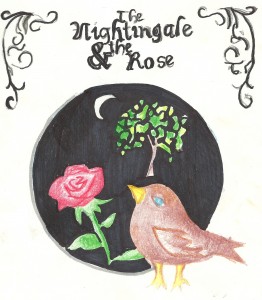A Rose and a Nightingale
…were it not for this fair blossom, songless were the nightingale…
This is a response to Muhammad Iqbal’s poem, Complaint and Answer. The poem is written as a ghazal, a common form of prayer in Persian Islamic traditions. I chose this specific line because it is a common motif in Sufi poetry. The nightingale and the rose are often paired together as a symbolic representation of religious searching. The nightingale is a unique bird in that it sings both during the daytime and the night, so it is revered for its seemingly spontaneous and never-ending song. The nightingale might represent the mystic, or anyone who seeks a greater understanding of God while the rose represents the perfect beauty of God. Although roses don’t have much of any relation to nightingales in nature, the Sufis have believed a relationship exists for centuries. They believe that the nightingale is desperately enamored with the rose and sings to it at all hours of the day. However, the rose cannot return the love to the nightingale. Similarly, the Sufi mystic appears to be professing love in something that does not truly exist, but God’s grace is just too beautiful to ignore.
Iqbal is essentially wondering whether or not he and other followers of the Sufi tradition would even be able to perform their basic functions if it weren’t for the existence of God. They see God’s majesty in all aspects of their lives and see all that they do is centered around God and what God has afforded them. This poem really resonated with me because I also find a similar approach to my faith.
Both comments and pings are currently closed.
